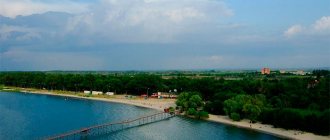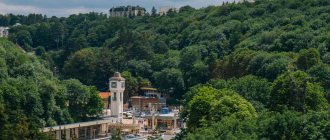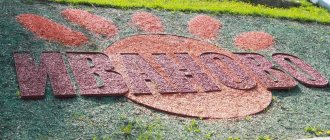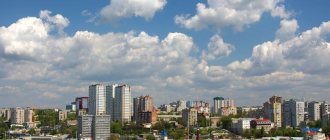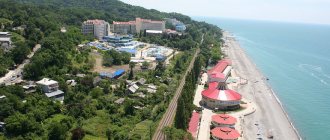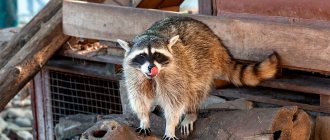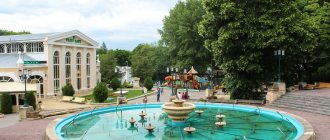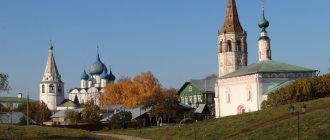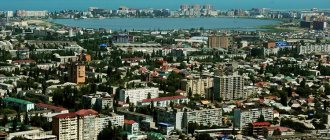Rostov-on-Don. February 2021. Illustration © Anatoly Belov │ SNEG5.com
Memorial sign: “On December 15, 1749, the Temernitsa customs house was founded, which laid the foundation for the city of Rostov-on-Don.” The beginning of Bolshaya Sadovaya Street. Photo: Anatoly Belov │ SNEG5.com
Rostov-on-Don is the administrative center of the Rostov region and the Southern Federal District of Russia with a population of more than 1 million people. The city is located in the southeast of the East European Plain, on the banks of the Don River, 46 km from its confluence with the Sea of Azov. The area of the city is 348.5 sq. km, the distance to Moscow is 1076 km.
The founding date of Rostov-on-Don is considered to be 1749, when the Russian Empress Elizaveta Petrovna signed a Decree establishing a state customs office at the mouth of the Temernik River.
After this, a port appeared here, and in 1761 the construction of the military fortress of St. Demetrius of Rostov began. The favorable geographical position contributed to the economic development of Rostov. By its 100th anniversary, the city had about 15 thousand inhabitants, and by the 20th century over 110 thousand people lived in it. The basis of Rostov's economy was trade, and the city itself was called a merchant city. However, by the beginning of the 20th century, more than 100 enterprises were already operating in Rostov, every third of which belonged to foreign capital. Until 1917, Rostov was the third city in Russia in terms of foreign economic trade turnover.
By the end of the 30s, in terms of population and level of economic development, it was one of the ten largest cities in the Soviet Union.
River Station. Photo: Anatoly Belov │ SNEG5.com | View from the river station to the embankment. Photo: Anatoly Belov │ SNEG5.com |
Photo: Anatoly Belov │ SNEG5.com | Photo: Anatoly Belov │ SNEG5.com |
Photo: Anatoly Belov │ SNEG5.com
River Station
The river station complex in Rostov-on-Don, which includes, in addition to the two-story station building, the 9-story Anchor Hotel, was put into operation in 1977. It is located on the right bank of the Don River, between the Voroshilovsky and Temernitsky bridges, at the address: Beregovaya Street, building 10. Now this building houses a shipping company.
Photo: © Anatoly Belov │ SNEG5.com
River station in Rostov-on-Don. June 2021 Photo: © Anatoly Belov │ SNEG5.com
River station in Rostov-on-Don. June 2021 Photo: © Anatoly Belov │ SNEG5.com
Surb-Khach Church-Museum
One of the oldest beautiful buildings in the city is the church of the Armenian monastery Surb-Khach (“Holy Cross”), built in 1786-1792. designed by the Russian architect I.I. Starova. In its building there is a branch of the Rostov Regional Museum of Local History - the Museum of Russian-Armenian Friendship - a place for carefully preserving the history and culture of the Don Armenians.
Next to the building of the temple-museum there is another popular place - a spring with holy and healing water. And near the walls of the Surb-Khach monastery lie many famous people of Armenian nationality - poets, writers, politicians.
Monument to M. A. Sholokhov
Monument to M. A. Sholokhov on the embankment in Rostov-on-Don. Sculptor: N.V. Mozhaev. Opened on May 24, 2000. Installed on a marble pedestal, there is a recognizable Sholokhov flourish and a well-known almost life-size figure in a simple blouse with the same cigarette in his hand. The monument is cast from copper. Height – just over two meters. June 2021 Photo: © Anatoly Belov │ SNEG5.com
Monument to M. A. Sholokhov. June 2021 Photo: © Anatoly Belov │ SNEG5.com
Monument to M. A. Sholokhov. June 2021 Photo: © Anatoly Belov │ SNEG5.com
Monument to M. A. Sholokhov on the embankment in Rostov-on-Don. June 2021 Photo: © Nikita Kirichenko │ SNEG5.com
Monument to M. A. Sholokhov. Photo: © Nikita Kirichenko │ SNEG5.com
3. Backstage of the SFU library on the street. Pushkinskaya, the best place for photo shoots
Address: st. Pushkinskaya, 148 (Zonal Scientific Library of the Southern Federal University)
A real decoration of Pushkinskaya Street is the library building of the former Russian State University. But the most interesting thing is on the outskirts of this library. On the reverse side, the building resembles an ancient Greek temple, with high columns. It’s good to just sit here and think about the eternal.
SFU Library on Pushkinskaya
Sculpture "Rostovite"
Sculpture "Rostovchanka" on the embankment in Rostov-on-Don. Sculptor A. A. Sknarin. Installed in 1984. The sculptor presented the image of a beautiful and young resident of the city, facing the sources of the Don. June 2021 Photo: © Anatoly Belov │ SNEG5.com
Sculpture "Rostovite". June 2021 Photo: © Nikita Kirichenko │ SNEG5.com
Sculpture "Rostovite". June 2021 Photo: © Nikita Kirichenko │ SNEG5.com
Sculpture "Rostovchanka" on the embankment in Rostov-on-Don. June 2021 Photo: © Anatoly Belov │ SNEG5.com
Sculptures “Anchor” and “Artist”
The sculpture “Anchor” on the embankment in Rostov-on-Don. June 2021 Photo: © Anatoly Belov │ SNEG5.com
The sculptural composition “Artist” on the embankment in Rostov-on-Don. Installed in 2013. Sculptor: Oleg Kukushkin. June 2021 Photo: © Anatoly Belov │ SNEG5.com
Anticafe in Rostov: Gallery Tsiferblat
Address: Sokolov Avenue, 46, but you can only enter from the courtyard on the Pushkinskaya side. You need to walk between the store and the hostel to the red metal gate and climb the stairs to the “ Dial ” sign.
Official website: https://rostovdon.ziferblat.net/
Last year, several anti-cafes opened in Rostov. But Zhanna and I came to the Tsiferblat Anticafe, which I knew from the Moscow chain of the same name. The dial is located in the very center, on the street. Pushkinskaya. Yoga and dance classes are held here, people drink tea and chat in a cozy cafe, watch films in English, and meet with friends. Walking tours around Rostov are organized on Saturdays. I admit, I was very surprised that such a place existed in Rostov. The only thing valuable on the dial is time: the cost of a minute of the first hour is two rubles, the second and subsequent ones are one.
By the way, there is no alcohol here, as in most anti-cafes. So just tea, coffee, buns, intellectual games and intimate conversations!
Gallery Dial in Rostov
Sculpture "Cranes"
Photo: © Anatoly Belov │ SNEG5.com
Sculpture "Cranes" on the embankment in Rostov-on-Don. June 2021 Photo: © Anatoly Belov │ SNEG5.com
Sculpture "Cranes" on the embankment in Rostov-on-Don. June 2021 Photo: © Nikita Kirichenko │ SNEG5.com
Sculpture "Cranes". Photo: © Nikita Kirichenko │ SNEG5.com
Sculpture “Mechanical Heart”
Symbolizes the key role of the Don region in the new industrialization of southern Russia. Development of the investment development agency of the Rostov Region for the International Investment Forum “Sochi-2012”.
Of no less interest is the paving stones on which this unusual structure is installed. She is not simple here. A During the Great Patriotic War: It was founded during the end of the Second World War after work was carried out to restore the embankment. Nazi prisoners of war took part in laying the paving stones.
Sculpture “Mechanical Heart”. Embankment in Rostov-on-Don. June 2021 Photo: © Anatoly Belov │ SNEG5.com
Sculpture “Mechanical Heart” (“Industrial Heart”). Embankment in Rostov-on-Don. June 2021 Photo: © Anatoly Belov │ SNEG5.com
Sculpture “Mechanical Heart”. June 2021 Photo: © Nikita Kirichenko │ SNEG5.com
Photo: © Nikita Kirichenko │ SNEG5.com
Photo: © Nikita Kirichenko │ SNEG5.com
Sculpture “Mechanical Heart” (“Industrial Heart”). Embankment in Rostov-on-Don. June 2021 Photo: © Anatoly Belov │ SNEG5.com
What to visit in Rostov-on-Don: walking tour through the city center
You can walk around the center of Rostov, especially in good weather, for hours. But what if you’re in the city for the first time and don’t know where to go first? Donnews.ru has prepared an approximate route for a short walking walk - in just over two hours you can measure the entire central part of the city in steps. But keep in mind that we indicate the time it will take just to walk, and how much you will spend on photography and detailed study of the sights is up to you.
Comfortable shoes, a bottle of water and a good mood will be a great help on this little journey. So, let's go!
Route: we start a walk near the Central Department Store (Bolshaya Sadovaya, 46/30) , go down into the underground passage, admire the mosaics, make a stop near Korobeinik with a cat, then go for a walk in Gorky Park. The route length is 480 meters, travel time is 6-8 minutes.
The central entrance to the park is located on Bolshaya Sadovaya, where many houses of merchants who made a huge contribution to the development of Rostov have been preserved. It’s not for nothing that a sculpture of a Merchant Peddler with a cat was installed near the intersection with Budennovsky Avenue. The cat must be petted for good luck. The townspeople love this sculpture, and one of the fun is dressing the merchant and his companion. So, in the cold season, a cat sometimes dresses in a knitted sweater, and on Airborne Forces Day, a peddler is dressed up in a vest.
Next to the monument there is a cultural park named after Gorky. Here, for example, there is an astronomical observatory, which was founded in 1948, and reopened in 2015 after reconstruction. Here you can observe photos and chromospheres of the Sun, watch 3D video lectures on astronomy, go on a virtual tour of the starry sky and “fly” on a spaceship simulator. If you are in Rostov on Sunday, you can go to the park in the morning to immerse yourself in the atmosphere of the antique market. Here you can find antique dishes, vintage accessories, copper samovars and military history items.
The underground passages on Sadovaya are also interesting. They were built in the 1970s and 1980s and were transformed by their creators into true works of art thanks to Florentine-style mosaics. Each piece of tile was selected, painted and fired by hand. The subjects of the panels are quite diverse - some are dedicated to Soviet childhood, others to the Great Patriotic War or the conquest of space.
Route: Leaving Gorky Park, turn left, pass the beautiful building of the Rostov City Duma, cross Bolshaya Sadovaya along a controlled pedestrian crossing and reach Soborny Lane. We walk, take pictures or visit coffee shops. Next we continue along Soborny to the Cathedral of the Nativity of the Blessed Virgin Mary, and then visit the Central Market. The length of the route is 1.7 kilometers, travel time is about 20 minutes.
Adjacent to Sadovaya is Soborny Lane, which after reconstruction has become almost completely pedestrian. Coffee shops, bakeries and shops have opened here, and sitting on a bench you can admire the view of the Cathedral of the Nativity of the Blessed Virgin Mary, and then take a walk to the Central Market and further to the embankment.
The Central Market is the true embodiment of the South. Whole rows of vegetables, fruits, spices, sweets. Meat and dairy aisles, all types of cheeses and sausages. Recently, a fish pavilion was opened inside the market, where you can buy both local fish and seafood delicacies. For residents of the northern regions, such abundance will be a special experience and a reason for gastronomic shopping.
Route: From the Central Market we turn left to Budennovsky Avenue. Then along the avenue we go down to the Don to Beregovaya Street. We cross the road and find ourselves on the Rostov embankment. We enjoy a walk along the stretch to Gazetny Lane. The length of the route is 1.3 kilometers, travel time is 15-20 minutes.
If you walk from the market down one of the alleys, you will find yourself on the embankment, a pleasant place for a walk. From here you have a beautiful view of the Don, the new Rostov Arena stadium and the renovated Voroshilovsky Bridge connecting Europe and Asia. During the warm season, food markets, festivals and concerts are held on the embankment, musicians perform and souvenirs are sold. There are cafes and restaurants here where you can taste dishes of national cuisines from different countries, and of course, enjoy Don dishes and taste local wines. Another bonus is a lot of sculptures. There is a monument to Rostovchanka, and Don Father, and a huge mechanical heart, and a monument to the Don crayfish - in general, there is a place to take memorable photos. In the heat, Rostovites, especially children, love to cool off under the streams of the fountain, which, when darkness falls, is illuminated with all the colors of the rainbow and plays to the accompaniment of music.
Another idea for relaxation is a short boat trip along the Don on boats. And if it doesn’t seem like enough, you can take a mini-cruise to the Cossack village of Starocherkasskaya. Some travel agencies even offer accompaniment of the Cossacks with songs and dances - everything is as it should be, there is plenty of color.
Next, near the monument to Maxim Gorky, we cross Beregovaya and begin to climb the Kazan Stairs. Then we follow straight along Gazetny Lane to Pushkinskaya. The length of the route is 2.4 kilometers, time is about 30 minutes.
Having climbed from the embankment to the central part of Rostov along the Kazan Stairs, it is worth crossing Sadovaya and strolling along Pushkinskaya - the green pedestrian artery of the city. Here you will meet street musicians, living sculptures, as well as flower sellers and souvenir sellers. In the summer, exhibitions and festivals, flash mobs and dance evenings are held here.
Route: from the intersection of Gazetny and Pushkinskaya we follow towards Teatralny Prospekt, admiring one of the greenest streets in Rostov-on-Don. The length of the route is 2.3 kilometers, travel time is about 30 minutes.
There are also many interesting houses with history. For example, in house No. 83 lived Sabina Spielrein, one of the world’s first female psychoanalysts, a student of Carl Jung and Sigmund Freud. And in house No. 59 there is an “Artists’ Entrance” - it’s definitely worth stopping by and taking a couple of shots.
Near the Don Public Library there is a bookstore where you can find literature for every taste for mere pennies. And the place was also chosen by Rostov cats, who doze on the old bindings, catching the sun's rays and the admiring glances of passers-by.
If you follow Pushkinskaya towards Teatralny, you can see the most beautiful forged balls dedicated to the life and work of the poet. Quite recently they were illuminated, and in the dark they began to play in a new way.
Route: having completed the journey along Pushkinskaya, we cross the road and go for a walk in the October Revolution Park. Travel time - about 5 minutes, distance - 440 meters
Having reached the end of Pushkinskaya, it is worth going to the October Revolution Park. There is something to do here at any time of the year. Attractions for the little ones, a wonderful carousel with horses for photo sessions, a pond with swans and even flamingos. In summer, you can meet and feed squirrels here, as well as lie on the grass or have a picnic on the well-groomed lawns. The park has several decent restaurants, a street food area, souvenir shops and even a small puppet theater.
One of the brightest attractions of the park is the One Sky Ferris wheel. Its height is 65 meters, and it is the second largest such attraction in Russia. The cabins offer a beautiful view of the city, the Gorky Theater, Theater Square and the Don River.
At the entrance to the park there is a fountain made by the famous sculptor Yevgeny Vuchetich. After reconstruction, the fountain acquired a light and music design and is especially beautiful in the evenings. It is curious that the composition was popularly called “Men with a Cup.” One glance is enough to understand why.
TOTAL: The total length of the route will be about 8.2 kilometers. The minimum travel time is about two hours.
Where to go? There are many places in Rostov that are worth visiting. It would take a lot of time and letters to list them all. Therefore, we will focus only on some of them.
Youth Theater (Svobody Square, 3). There are several theaters in Rostov, but this one is worth paying attention to, if only because its repertoire will appeal to both the youngest spectators and sophisticated theatergoers. Even classical works are approached here very creatively, and the production solutions are quite innovative. The legend of the theater is the play “Hamlet”, the action of which is not limited to the stage, but unfolds throughout the entire theater building, with the audience becoming part of the performance. It is worth considering that it is not easy to get tickets for this performance, so you need to take care of purchasing them in advance.
Theater "18+" and art space Makaronka (18th line, 8). A former pasta factory in Rostov has become a home for contemporary art. Under one roof there is a modern, rather experimental theater, as well as an exhibition space where the works of young artists are exhibited, performances and creative meetings take place.
Rostov Regional Museum of Local Lore (Bolshaya Sadovaya, 79). The museum's exhibitions are dedicated not only to the history of Rostov and the Rostov region: here you can learn about the history of perfumes, crystal, porcelain, toys and jewelry. You can also become a guest of a musical evening or sign up for a fascinating walking tour of Soldatskaya Sloboda, the historical part of the city, or immerse yourself in the world of the cinema of old Rostov.
Rostov Regional Museum of Fine Arts (Chekhova, 60). The museum presents several permanent exhibitions dedicated to foreign and Russian art, the art of the East, icon painting and applied art of the Don. It is curious that it was this museum, the only one of the classical ones, that was the first to host a rather shocking exhibition of brand realism by Sergei Shnurov. In addition, lectures and master classes await guests.
The Museum of the History of the North Caucasian Railway (Kazachiy Lane, 44a) has a large collection of antique steam locomotives, and also houses the oldest surviving passenger carriage in the country, which was produced in England in 1869. It is noteworthy that all the locomotives are still running today.
Rostov Hippodrome (Malyugina St., 233). Not everyone can boast that they have been to the races and, like in the old movies, placed bets, excitedly cheered for their horse, and then happily took their winnings from the box office. In Rostov, everyone has such an opportunity. Here you can not only try your luck, but also find out whether all ladies really come to the races in intricate hats or whether this tradition is a thing of the past.
All-season water park H2O (Mikhail Nagibin Avenue, 34). This is a place where you can plunge into summer on any day, and on a winter evening, when snow is falling from the sky, garlands are around, and steam is rising above the warm water, swimming in the heated pool on the roof of the water park can make a special impression. Steam in the thermal baths, swim, ride down the slides or visit the spa - everyone will find entertainment to their liking.
Rostov Zoo (Zoologicheskaya, 3). Rostov Zoo is one of the largest in Russia and Europe. Visitors can expect to meet a whole family of elephants, polar bears, rhinoceroses, lemurs and other animals. The zoo is open all year round, and in winter the residence of Father Frost opens there. One of the most famous inhabitants is the Amur tiger Ustin, who was found dying in the taiga. In 2014, the young tiger was released into the wild by President Vladimir Putin, but was never able to adapt to life in the wild and settled in Rostov. Here he found his wife Prima, and in 2021 he became the father of the little tigress Jasper.
What to try? Rostov is a multinational city, which means that here you can find cuisines from different nations and countries of the world. Of course, you should definitely try the dishes of Don cuisine - Don fish soup, Don cabbage soup, solyanka, local fish, Cossack-style liver pies, fish kulesh, dolma, Cossack-style blue ones...
By the way, you can order local Don wines with your meal, so that you can fully enjoy the local flavor.
Crayfish occupy a special place in the culinary life of Rostovites. Crayfish in Rostov can even be ordered to your home, like pizza or rolls. Crayfish are eaten at any time of the year, washed down with cold beer. Many families have secrets for properly boiling crayfish, and every Rostov resident can clean the crayfish correctly so that not a single piece of juicy meat is lost. All guests of the city should take a master class from local residents to learn all the intricacies of eating this snack.
Of course, Rostov has not escaped burger mania - here you can try burgers in almost every establishment. But still, the original Rostov street food is shawarma. Every Rostovite at least once in his life went “to the Central City Hospital” (a section of Voroshilovsky Prospekt adjacent to the Semashko Central City Hospital) to eat shawarma. Now this place has been improved - instead of scattered stalls of all types and sizes, civilized pavilions have appeared here. There is less color, but more attention is paid to sanitary standards. Competition, however, is still high, so be prepared to deal with barkers.
Recently, vegetarian establishments have also appeared in Rostov, where even vegans and raw foodists can find treats to suit their tastes.
The confectionery “Golden Ear” on Bolshaya Sadovaya, 43 can be called a kind of time machine. For adults, this place will be a ticket to childhood, when on weekends there was a family trip to the park with carousels and balls, and then a mandatory visit to the confectionery followed. There was nothing better and tastier than a milkshake with ice and a milk mustache afterwards and a “Stump” cake on a saucer with a golden border. In the confectionery on Sadovaya, even the interiors retain the spirit of that unforgettable time.
Those who are lucky enough to be in Rostov for the Old New Year can join a tradition that is unusual for most regions of Russia - fortune telling on dumplings with surprises.
They are molded in advance, adding peas, coins, caramels, threads, buttons to the filling - there are no limits to your imagination. Then the family gathers or invites guests and the fortune-telling itself begins - a cheerful eating of dumplings with a discussion of who got what in the treat and, accordingly, who will have what in the coming year. For example, caramel - for love, beans - for a new addition to the family, a coin - for money. On this holiday, you can eat dumplings with surprises in almost all cafes and restaurants, or you can buy frozen ones in supermarkets. Alina Klyuchko
Sculptural composition “Gregory and Aksinya”
The sculptural composition “Gregory and Aksinya” on the embankment in Rostov-on-Don. June 2021 Photo: © Anatoly Belov │ SNEG5.com
Cultural attractions
Rostov-on-Don is a large cultural center with different types of institutions. There are philharmonic societies, theaters, museums and folk art houses.
Drama Theater named after M. Gorky
The Rostov Academic Drama Theater occupies a building built in the 1930s and restored after the war. It is considered a masterpiece of constructivism, and its model is exhibited at the London Architecture Museum.
The shape of the building resembles a tractor, and the facade uses a lot of glass and granite.
The theater has three stages:
- large with 1165 seats,
- small for 300 spectators,
- experimental for 70 visitors.
They stage performances based on famous Russian and foreign classics: “The Fate of Man” by M. Sholokhov, “Woe from Wit” by A. Griboyedov, “Romeo and Juliet” by W. Shakespeare.
The cost of theater tickets depends on the performance and location - from 600 to 3000 rubles.
Palace of Culture "Rostselmash"
The modern cultural center was built in the post-war years next to the park and stadium. The three-story building was built of white stone. There are 8 tall columns with arches installed on the porch, and a staircase is located in the center, to the left and to the right of them. The front façade is complemented by sculptural bas-reliefs. There is a fountain in the square in front of the entrance.
The main hall has a ground floor and two balconies - it can accommodate 1000 people in total. Concerts and performances are staged here. A separate room with 300 seats is allocated for official events.
The Palace of Culture has its own dance and music groups, as well as theater studios for children and adults.
Museum of the North Caucasus Railway
The Railway Museum is a branch of JSC Russian Railways. It has been operating since 2003 and includes two locations. In the Palace of Culture of Railway Workers at the Rostov-Glavny station you can see exhibits highlighting the history of North Caucasus Railways: smaller versions of carriages and locomotives from different eras, illuminated panoramas, podiums and showcases.
open-air museum has been created with real exhibits : a heated carriage from the Second World War, a steam locomotive of the post-war years, tank and artillery tractors. All this is placed on the 1.9 km long tracks of the now inactive Gnilovskaya station.
Sculptural composition “Sport”
Sculptural composition “Sport” on the embankment in Rostov-on-Don. Installed in the 1950s. June 2021 Photo: © Anatoly Belov │ SNEG5.com
Photo: © Nikita Kirichenko │ SNEG5.com
Sculptural composition “Sport” on the embankment in Rostov-on-Don. Installed in the 1950s. June 2021 Photo: © Anatoly Belov │ SNEG5.com
Monument to Admiral F. F. Ushakov
Monument to Admiral F. F. Ushakov. Sculptor A. A. Sknarin. Installed in 2002 on the embankment in Rostov-on-Don. June 2021 Photo: © Anatoly Belov │ SNEG5.com
Monument to Admiral F. F. Ushakov. Sculptor A. A. Sknarin. Installed in 2002 on the embankment in Rostov-on-Don. June 2021 Photo: © Anatoly Belov │ SNEG5.com
Sculptural composition “Cancer”
The sculpture was installed in 2013 as an original decoration of a favorite vacation spot for local residents and guests of the city. This sculptural composition, as a small memorial plaque indicates, is a gift to Rostov-on-Don from Rostov Port LLC.
It is no coincidence that cancer is immortalized in bronze on the embankment. It is these inhabitants of the aquatic environment that are the brand of Rostov-on-Don, in which boiled crayfish is a local “national” dish. It is boiled crayfish that is fed here to visiting stars, politicians, writers and all guests of the city.
Sculptural composition “Cancer” on the embankment in Rostov-on-Don. June 2021 Photo: © Anatoly Belov │ SNEG5.com
Entertainment
The city offers a lot of entertainment, including for extreme sports enthusiasts. Various land and water attractions are quite popular.
Ferris wheel "One Sky"
The Rostov Ferris Wheel is the third highest in the world - it rises 65 m above the ground. It offers an overview of the city within a radius of 25 km.
All 30 cabins are glazed, there are tables and soft sofas inside, designed for 6 people. The attraction can accommodate up to 180 visitors at a time.
The Ferris wheel operates all year round in any weather. Each cabin is equipped with air conditioning to cool the air in summer and heat it in winter. The attraction also has more comfortable seats - with leather chairs and music. They are often chosen by young people for romantic dates.
The lowest ticket price is on weekdays from 10.00 to 12.00. Children under 6 years old are admitted free of charge.
Water park "H2O"
The water and health complex is located on an area of 25,000 square meters. m and consists of three levels:
- On the ground floor there is a large swimming pool with imitation waves and a smooth entry into the water, Tsunami and Slow River attractions, grottoes, and a playground for children. Here you can also buy drinks in two bars.
- The second level of the water park is completely dedicated to a relaxation area: massage rooms, spa salons, cafes.
- On the third floor there is a cafe, a bathhouse, and classic swimming pools - summer and all-season.
The water park has 8 indoor and outdoor water slides. For thrill-seekers, there is the Magic Hole attraction with numerous twists and turns.
Old bazaar
This is what people call the Central Market of Rostov-on-Don, which is located on Budenovsky Prospekt. The first shopping arcades appeared here back in the 1820s, and now it is the largest market in southern Russia.
On the territory of the bazaar there are covered food areas where they sell meat, eggs, milk, vegetables and fruits, cereals, and spices. Clothes, shoes, and haberdashery are sold in the clothing area.
Market prices are quite high in the city. This is due to the expensive rental of places. But many sellers are willing to bargain and make good concessions. Trade at the market also goes on at night: products are sold in bulk at almost half the price.
Restaurant "Iveria"
The Georgian restaurant has two rooms. The main room can accommodate up to 120 people, and the veranda can accommodate 20 guests. Another 100 seats are provided under the summer tent on the street. The interior of the establishment is designed in a classic style.
The decoration of “Iveria” includes brick. Small paintings hang on the walls. The rooms are furnished with wooden tables, chairs and soft sofas. The emphasis in the interior is on muted shades.
The Iveria restaurant offers not only Georgian dishes, but also European cuisine. The menu includes first and second courses, appetizers, sauces, salads, and desserts. But people come here specifically for the national Georgian pastries: khachapuri, mchadi, chvishtari, lavash. In addition, the establishment offers a huge selection of meat, fish and vegetables cooked on the grill.
The check for lunch at Iveria ranges from 1000–1700 rubles.
Monument to G. Ya. Sedov
Monument to G. Ya. Sedov on the Walk of Fame, laid in 2021 in honor of the 70th anniversary of the formation of the Rostov region. Rostov-on-Don, June 2021 Photo: © Anatoly Belov │ SNEG5.com
View from the observation deck at the monument to G. Ya. Sedov of the Rostov Arena stadium. Rostov-on-Don, June 2021 Photo: © Anatoly Belov │ SNEG5.com
View from the observation deck at the monument to G. Ya. Sedov on the Voroshilovsky Bridge. Rostov-on-Don, June 2021 Photo: © Anatoly Belov │ SNEG5.com
Don is a navigable river
River boats pass under the Voroshilovsky Bridge (height 17 m). Rostov-on-Don, June 2021 Photo: © Anatoly Belov │ SNEG5.com
River Don. Rostov-on-Don, June 2021 Photo: © Anatoly Belov │ SNEG5.com
Floating cafe. Rostov-on-Don, June 2021 Photo: © Anatoly Belov │ SNEG5.com
Photo: © Nikita Kirichenko │ SNEG5.com
They change the light bulbs in the lanterns. Photo: © Nikita Kirichenko │ SNEG5.com
Deserted embankment. Rostov-on-Don, June 2021 Photo: © Anatoly Belov │ SNEG5.com
Photo: © Nikita Kirichenko │ SNEG5.com
Night views of Rostov-on-Don
Suburban railway station of Rostov-on-Don. June 2021 Photo: © Nikita Kirichenko │ SNEG5.com
Main railway station of Rostov-on-Don. June 2021 Photo: © Nikita Kirichenko │ SNEG5.com
